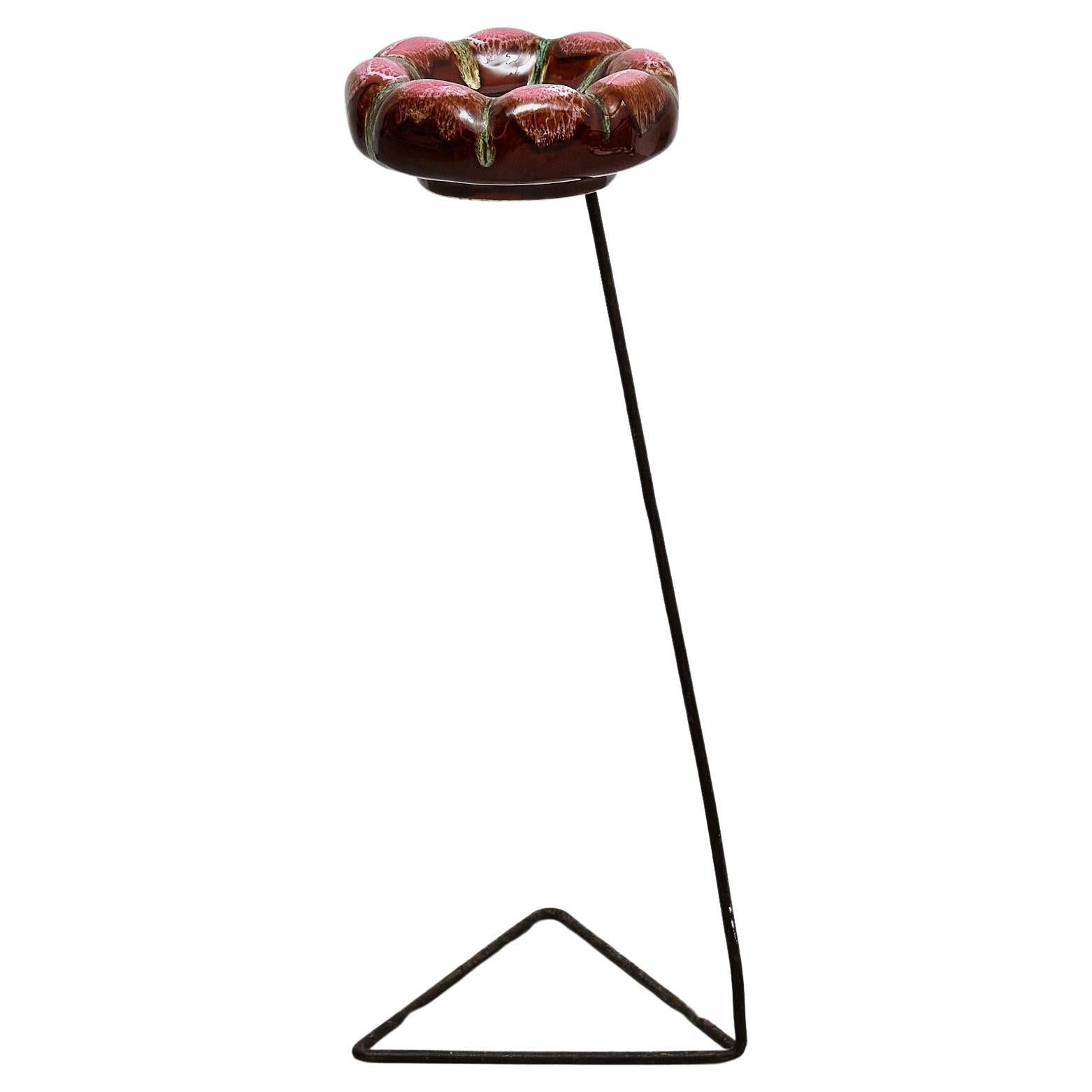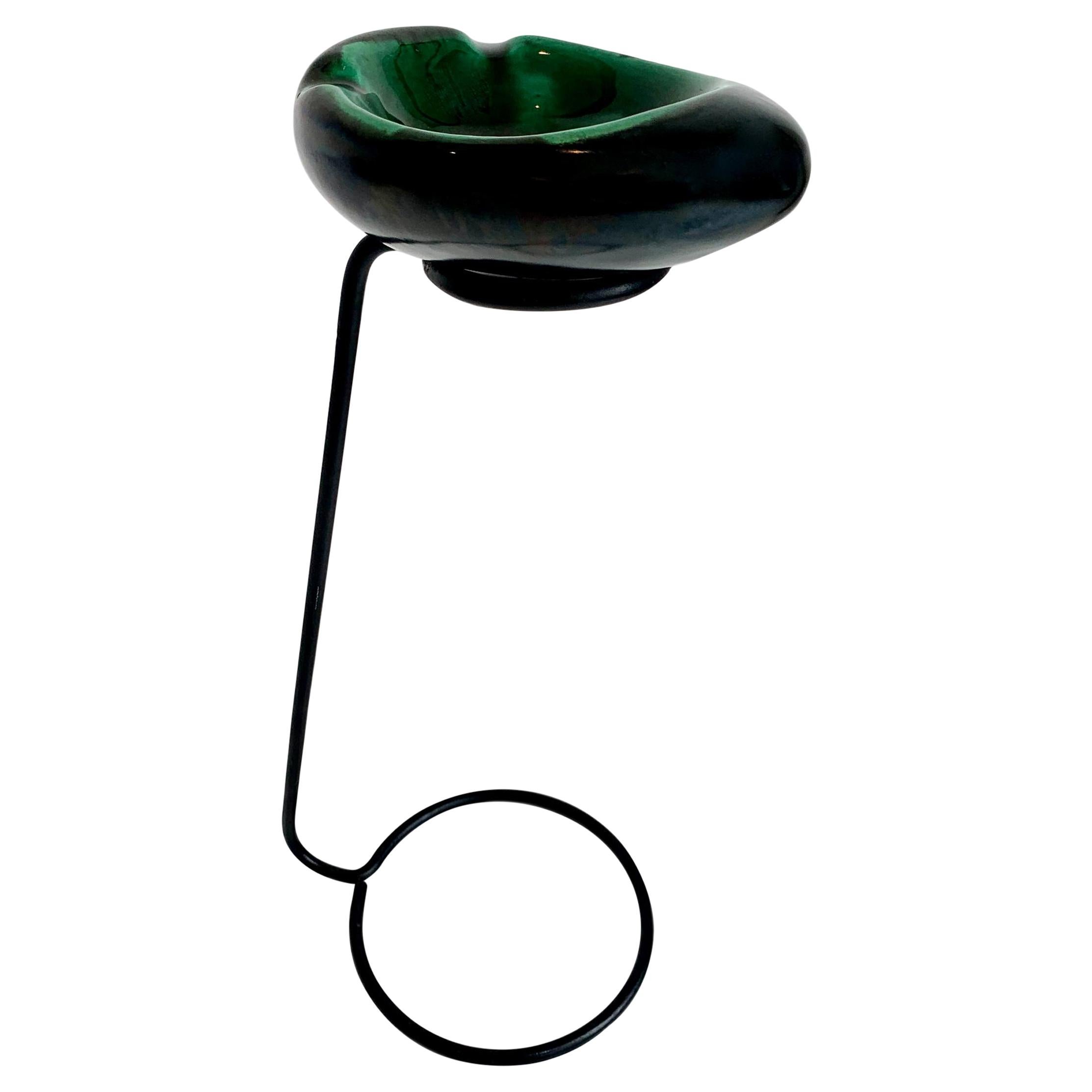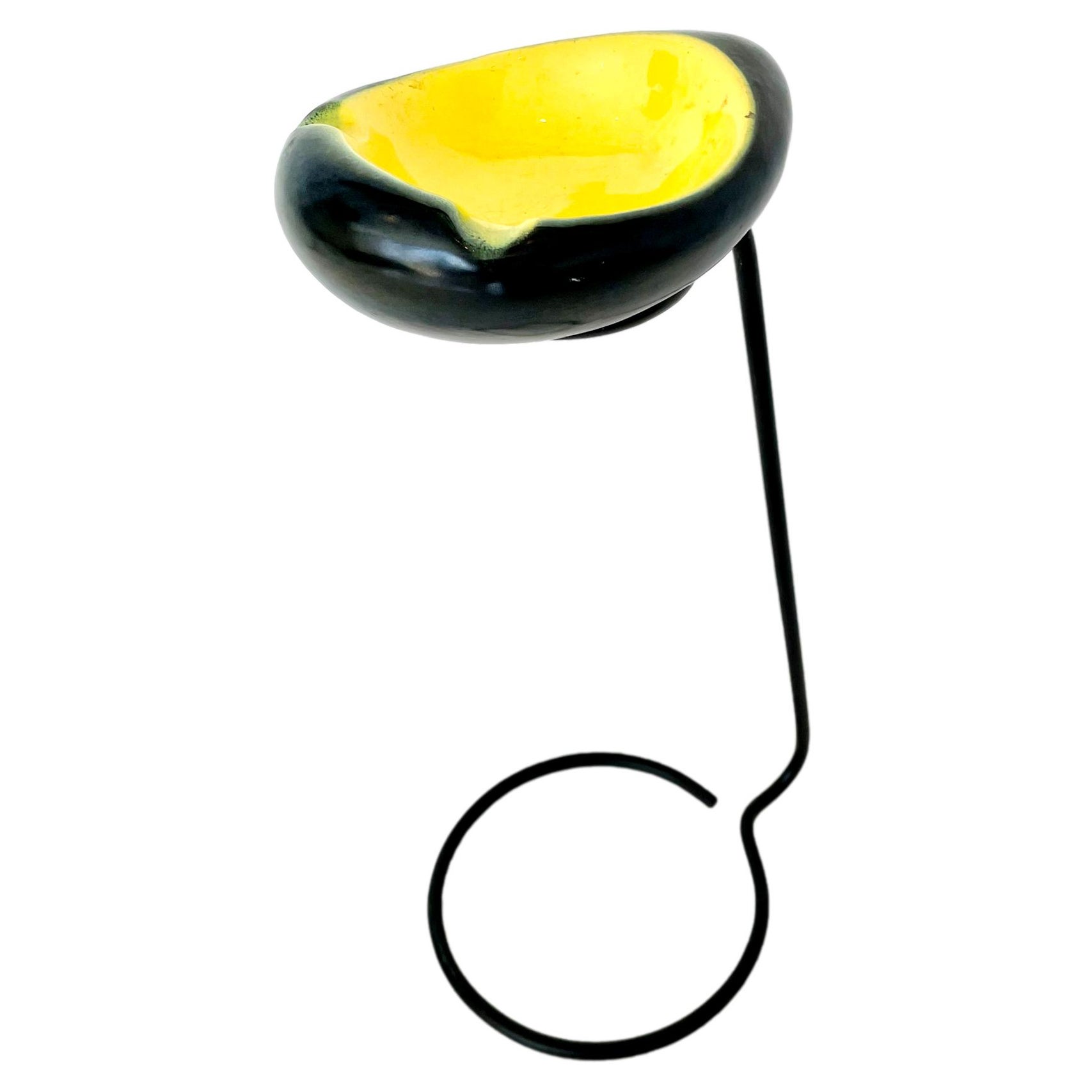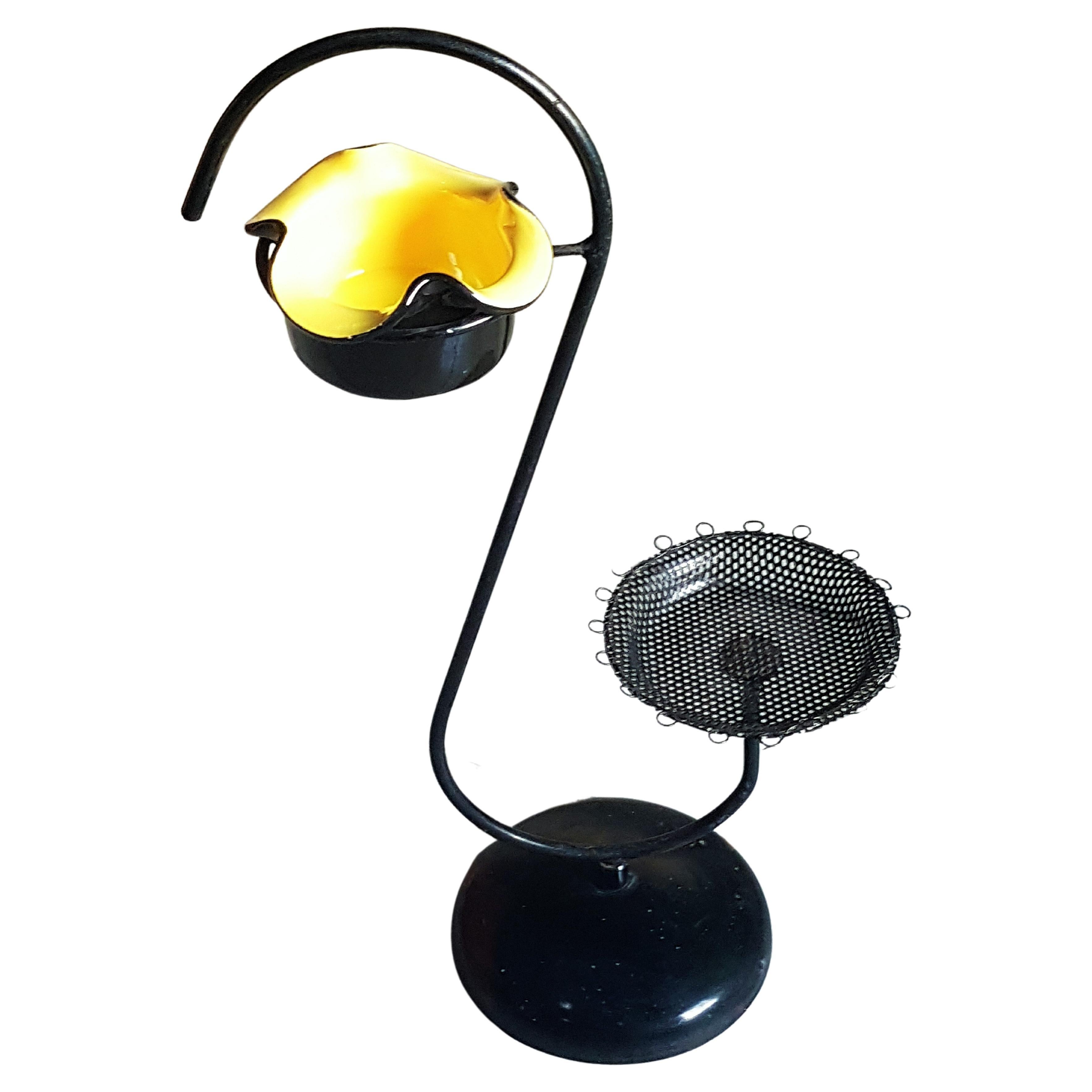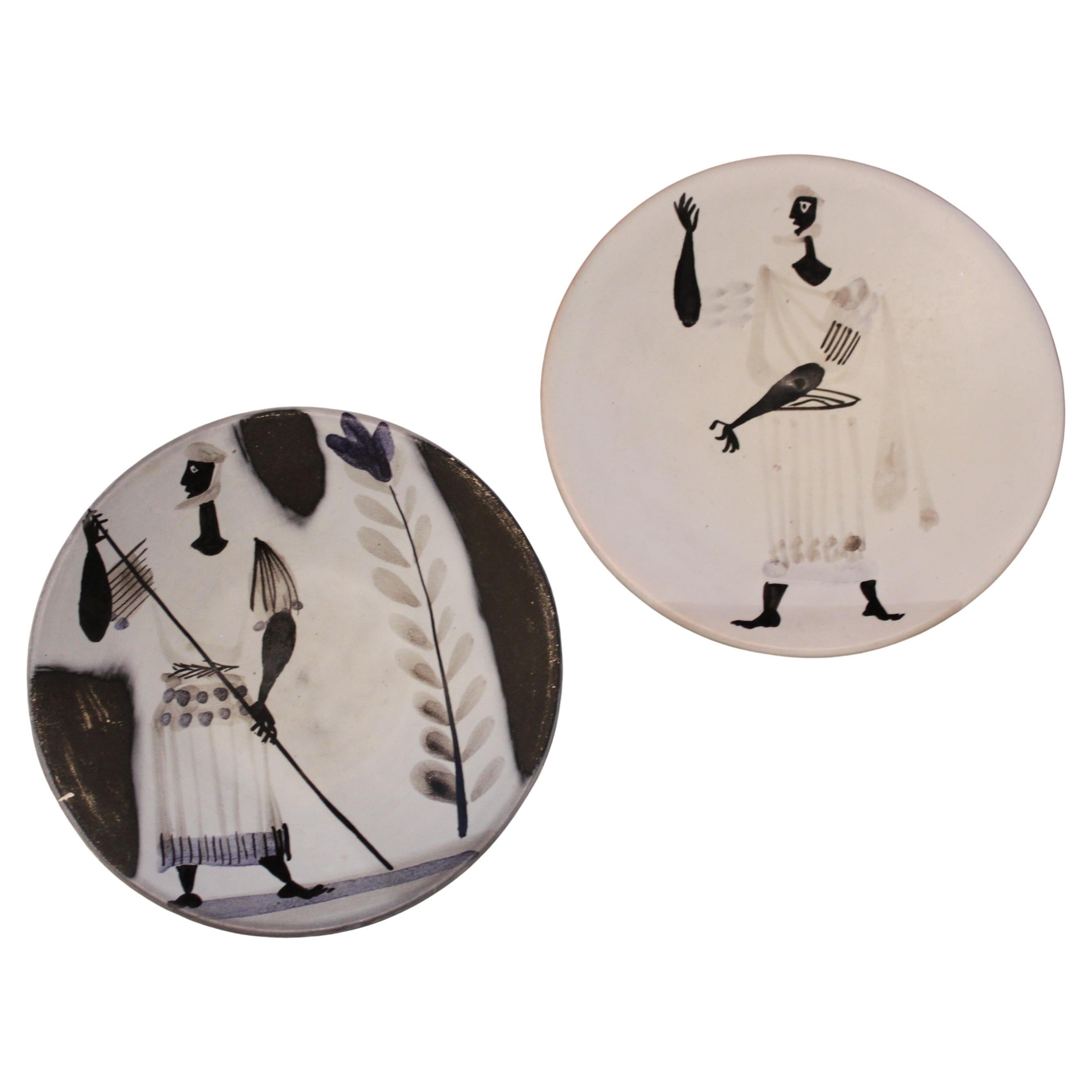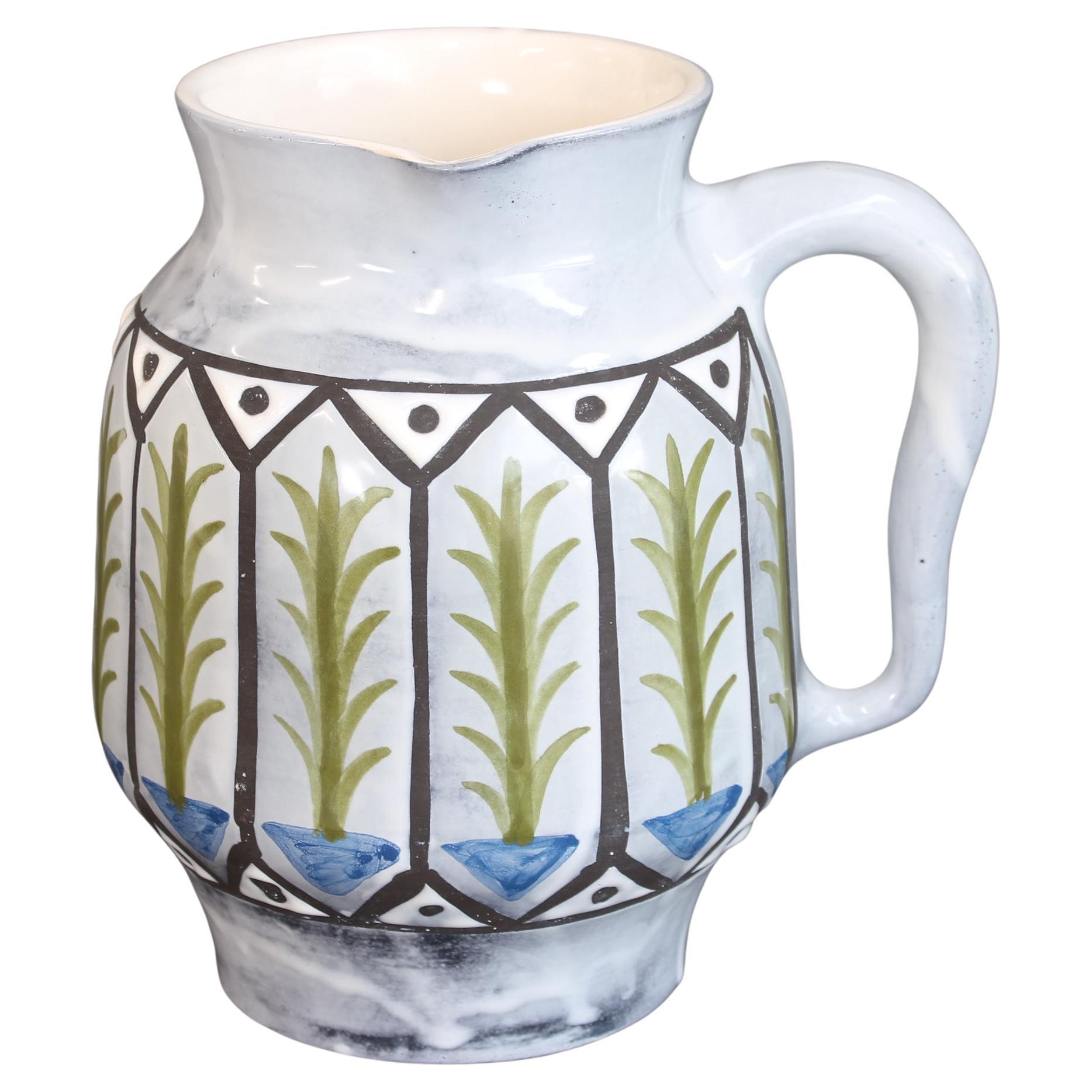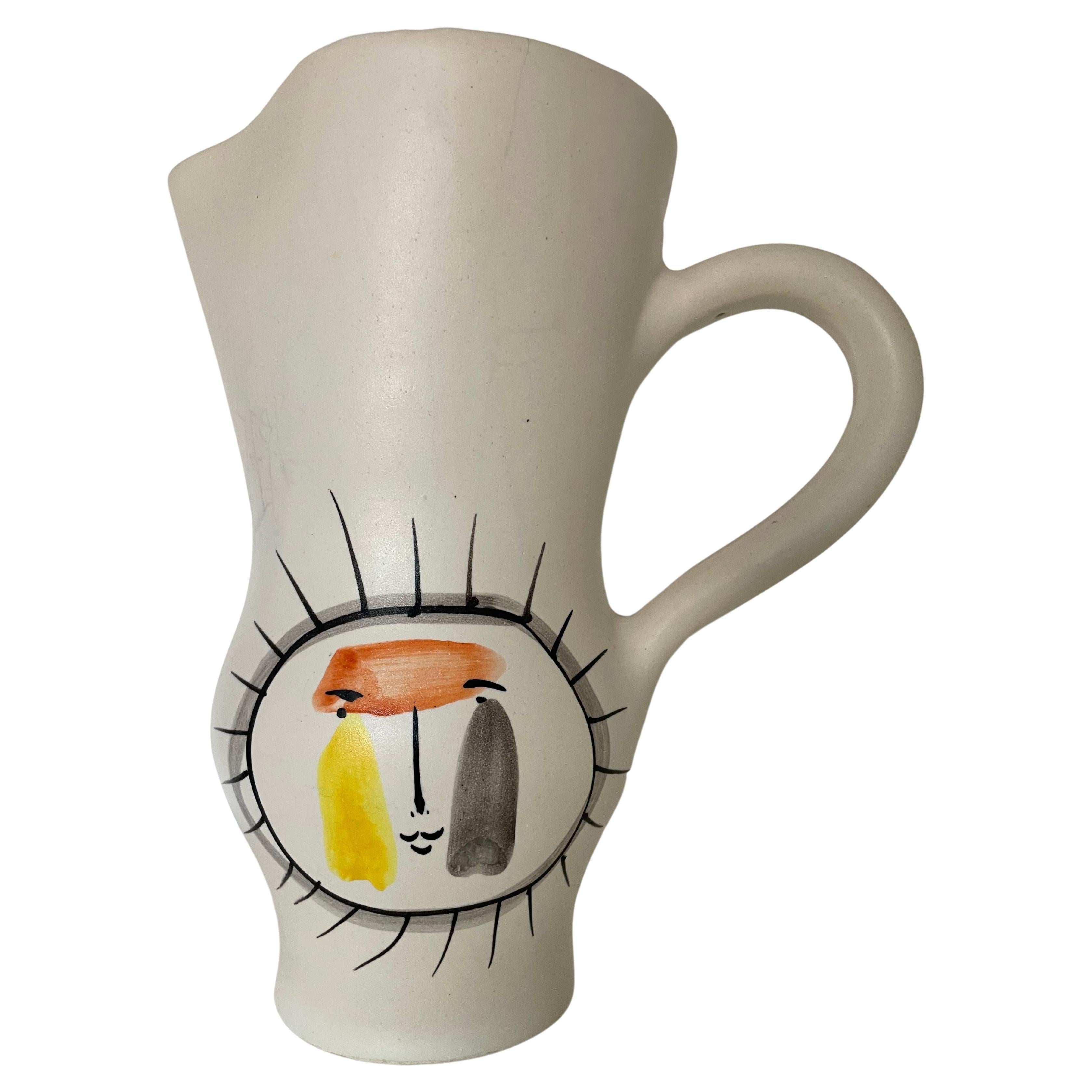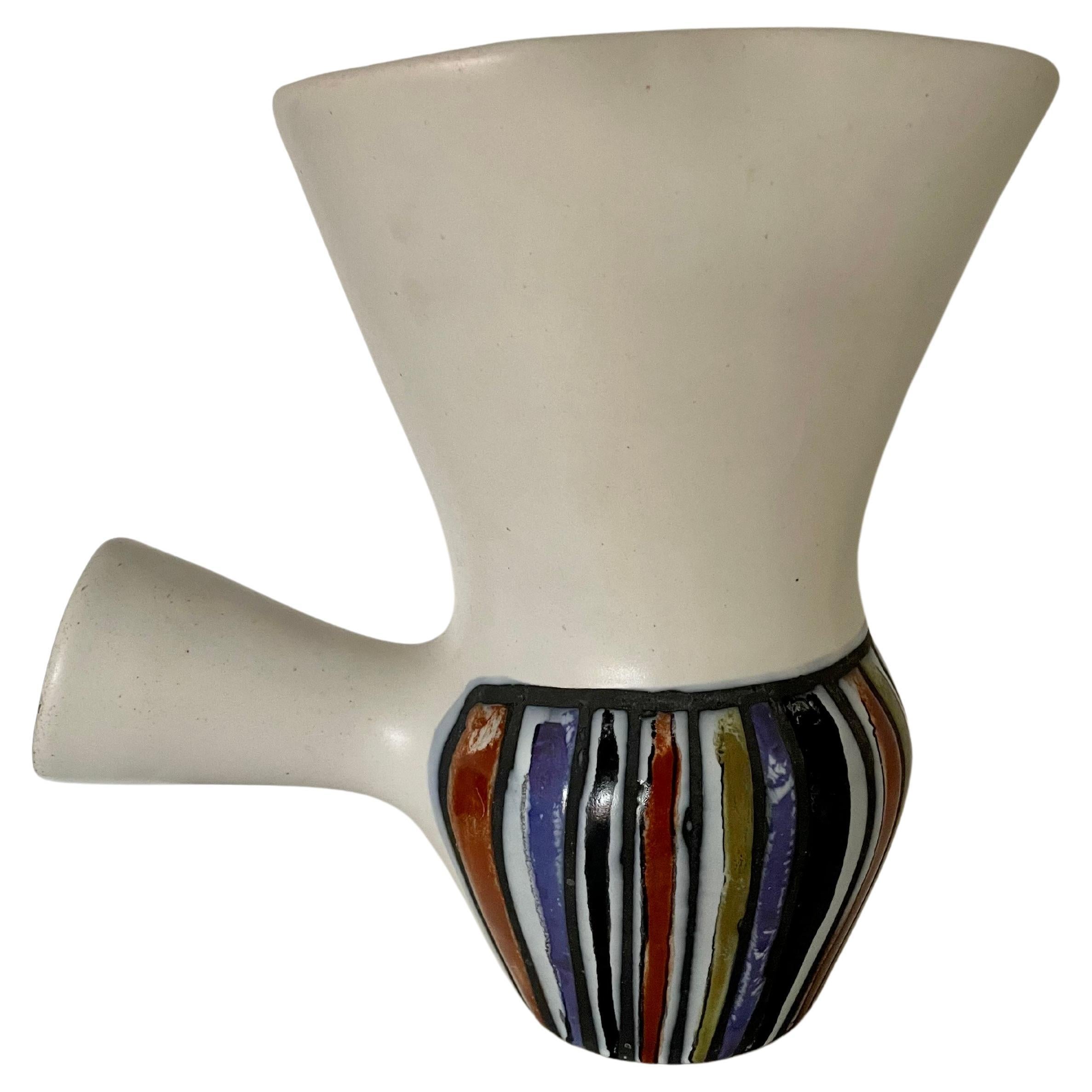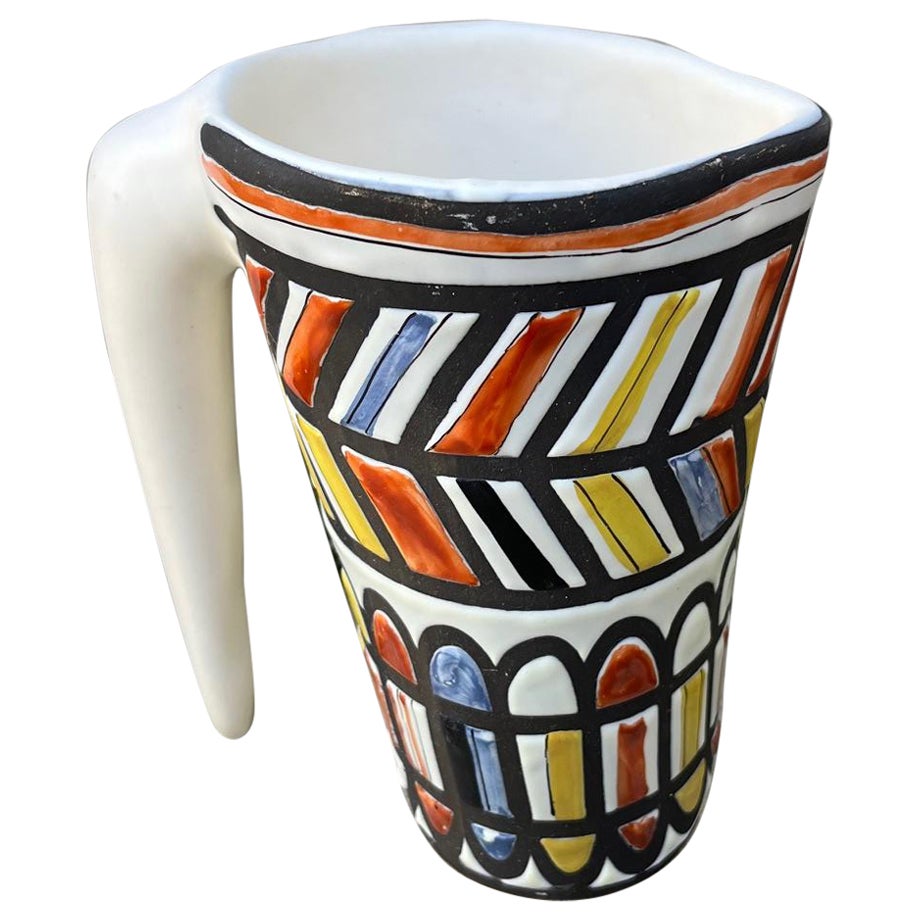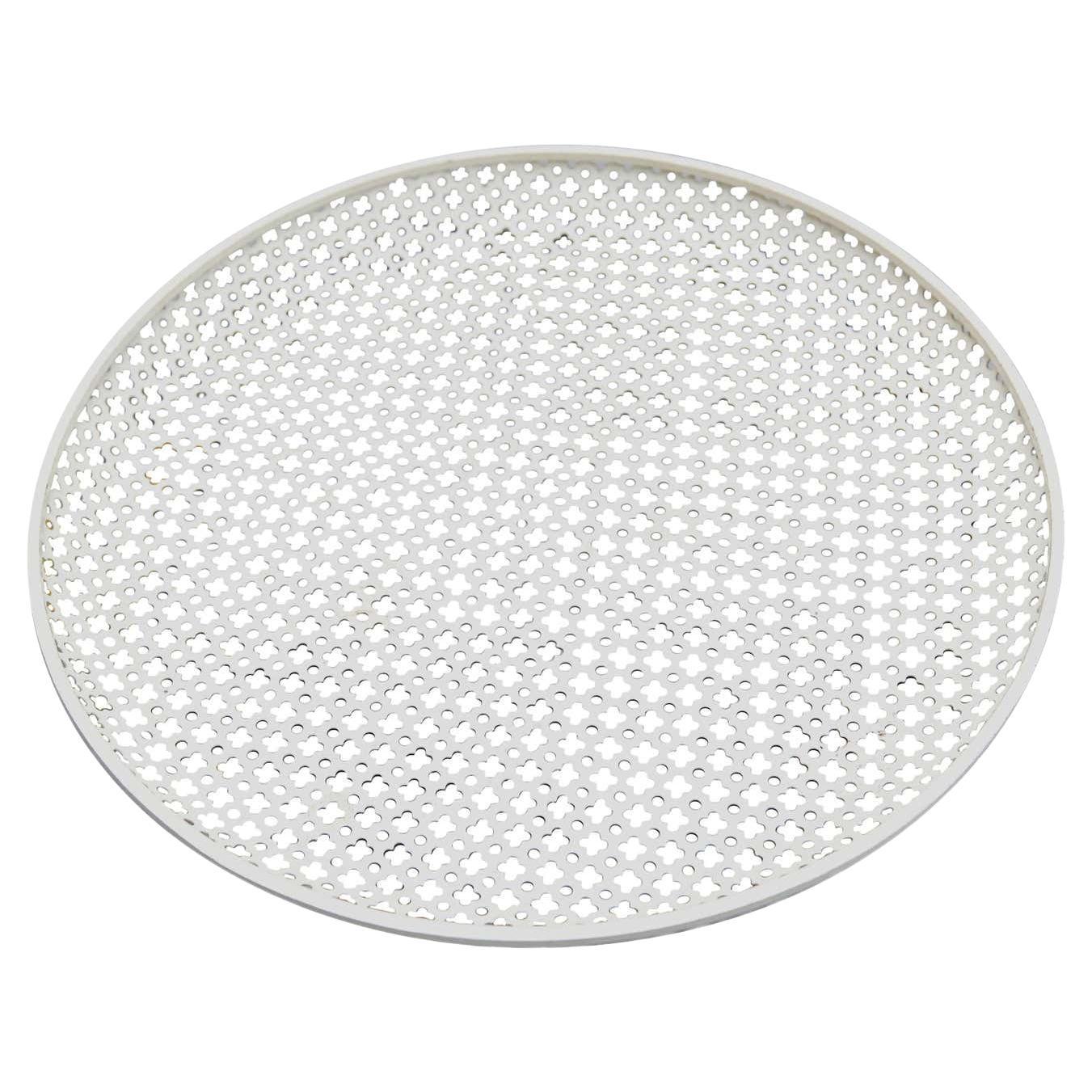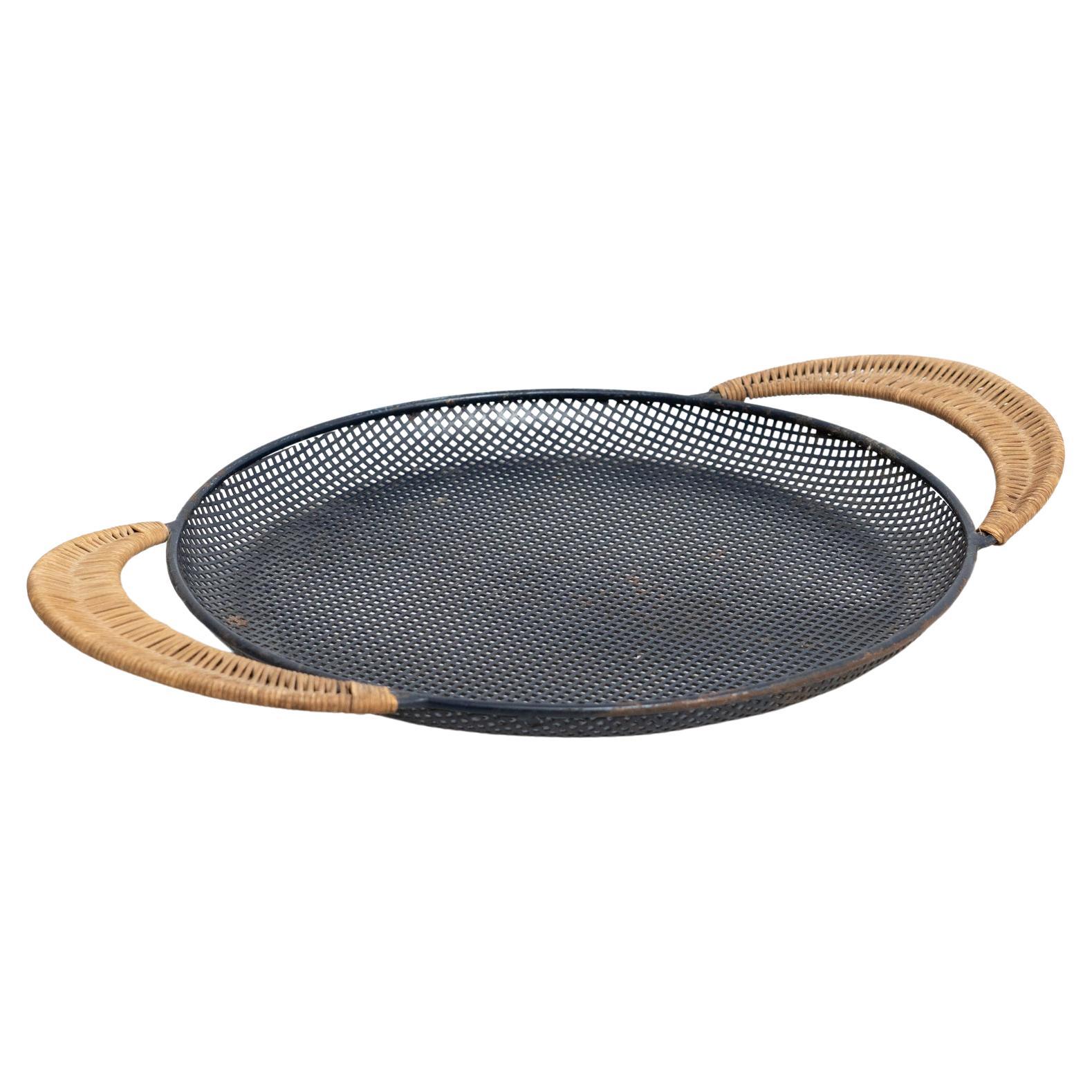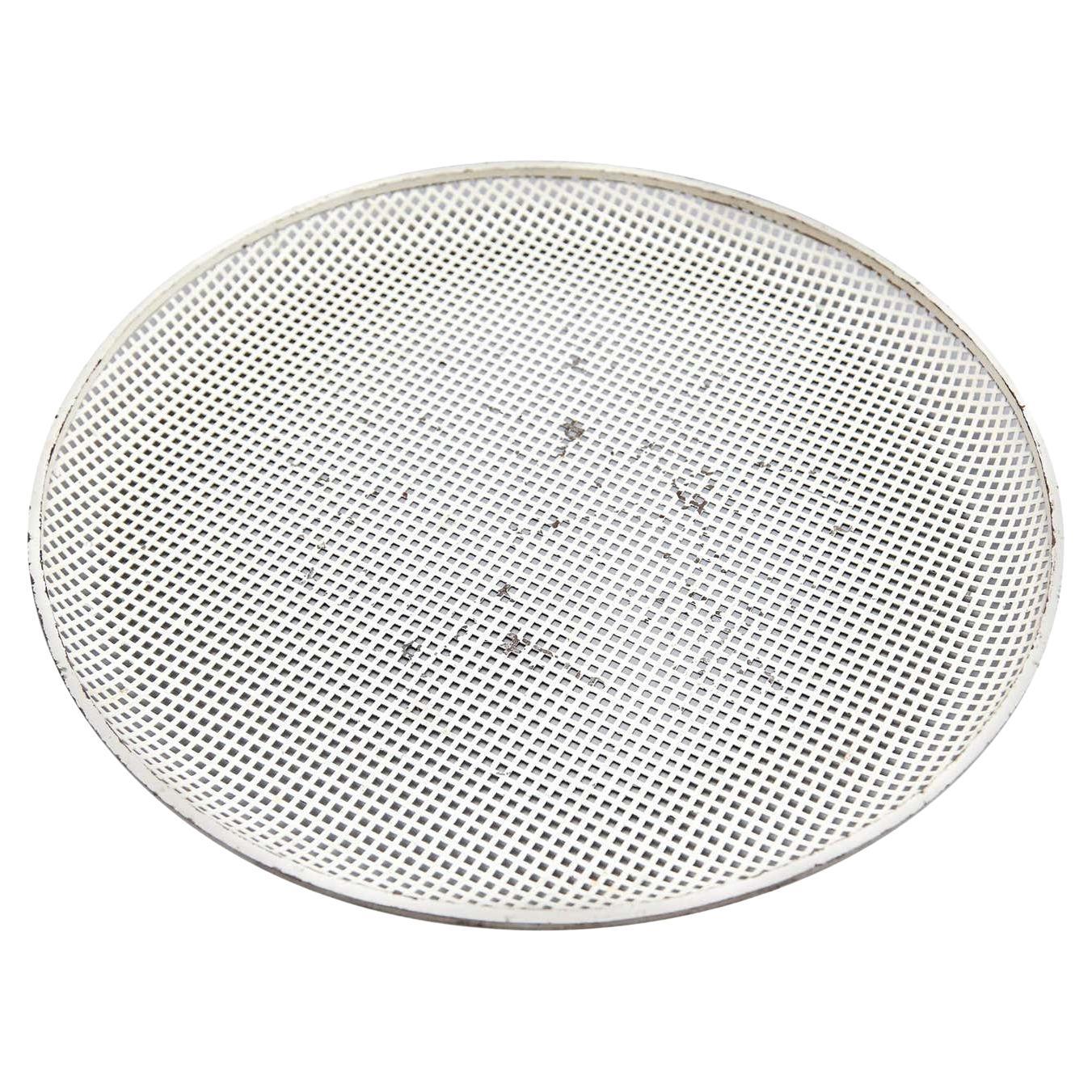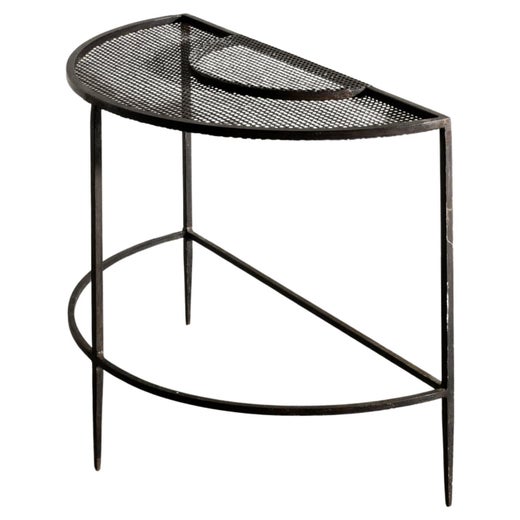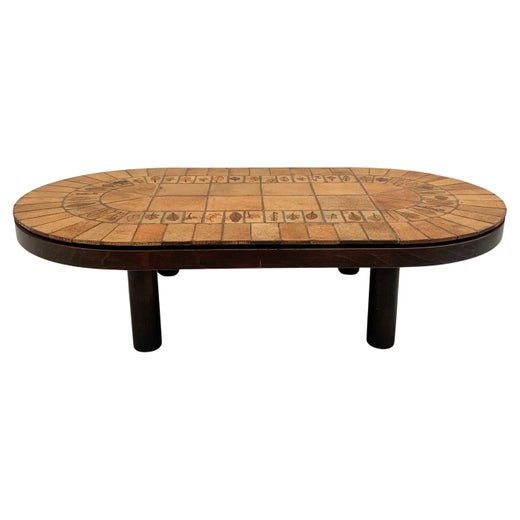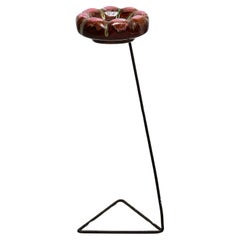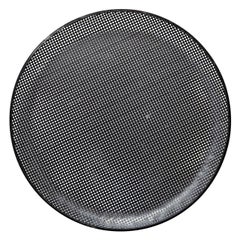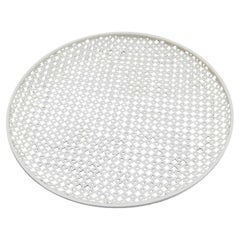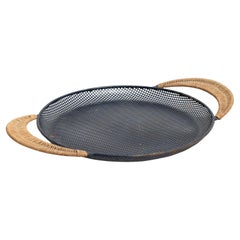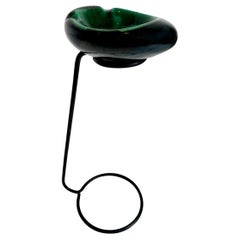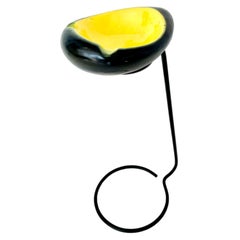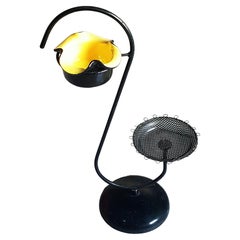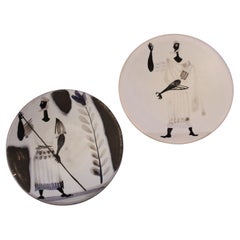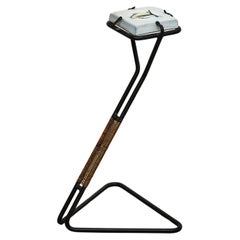
Roger Capron Ceramic on a Mathieu Matégot Base, circa 1950
View Similar Items
Roger Capron Ceramic on a Mathieu Matégot Base, circa 1950
About the Item
- Creator:Mathieu Matégot (Designer, Manufacturer),Roger Capron (Designer)
- Dimensions:Height: 22.05 in (56 cm)Width: 14.18 in (36 cm)Depth: 11.42 in (29 cm)
- Style:Mid-Century Modern (In the Style Of)
- Materials and Techniques:
- Place of Origin:
- Period:
- Date of Manufacture:circa 1950
- Condition:Additions or alterations made to the original: the ceramic was placed on the mategot base by previows owner. Wear consistent with age and use.
- Seller Location:Barcelona, ES
- Reference Number:Seller: RL.01.03.23.GB.8081stDibs: LU1427236242282
Mathieu Matégot
With their curvaceous metal surfaces and shapes often resembling sheets of folded paper, Mathieu Matégot's inspiring furniture and lighting designs are easily recognizable and highly sought after by collectors. By working with perforated sheet metal and metal tubing, the Hungarian-born French architect, artist and designer — who is known by aficionados for his “rigitulle” technique — created tables, chairs and decorative objects that are celebrated works of French modernism and make a statement in any interior.
Matégot attended the Budapest School of Fine Arts and Architecture. He graduated in 1929 and traveled before settling in Paris in 1931, where he worked as a window dresser for department stores and as a set designer for cabaret halls.
In 1939, Matégot joined the French army in resistance to invading Nazi forces. He was soon captured and sent to work in a German factory. It was at this factory where Matégot became familiar with the materials and techniques that would inform and inspire his trademark rigitulle method.
After the war ended, Matégot opened a workshop in Paris and began to create handcrafted furniture that didn't conform to established styles of the time. Matégot explored merging traditional and non-traditional materials — he worked with formica, glass and natural materials such as rattan — and engaged in other forward-looking experiments. Matégot soon patented his career-defining rigitulle technique and material, which saw the designer working with metal tubing and perforated metal sheets and producing thin, airy folds into the metal as if he were manipulating fabric or paper.
Many of Matégot’s designs for table lamps, pendants, tables and more are reflective of the rigitulle technique, but the best-known work that exemplifies this process is his elegant three-legged Nagasaki chair, which he exhibited in 1954 at the Salon des Artistes Décorateurs. The original Nagasaki chair gave way to a collection that included a stool and an armchair. Matégot’s Nagasaki dining chair has been reissued by Gubi and is part of the permanent collection at the Vitra Design Museum, which is home to one of the world’s most important furniture collections.
Matégot created a range of smaller items for the home — serveware, side tables and magazine racks, each distinctive in their fluid and organic forms — but halted his career in design and moved to Angers in the early 1960s in order to turn to creating art. Today he is known for his abstract tapestries as well as his furnishings.
Find vintage Mathieu Matégot furniture on 1stDibs.
Roger Capron
Roger Capron is best known for his geometrically complex, vibrantly colored tile-topped coffee tables. These mid-century furnishings, with their comely palettes and playful arrangements of abstract forms or natural-world motifs, are approachable yet sophisticated. They draw on Scandinavian modernism and exemplify the Parisian ceramist’s belief in ensuring that things of beauty are easily and widely accessible, a principle espoused by French decorative artist and designer René Gabriel.
Capron graduated in 1943 from the School of Applied Arts in Paris. In a small atelier he later founded with Robert Picault and Jean Derval in Vallauris, Capron made alluring sculptures, table lamps and other objects and found inspiration in the work of Pablo Picasso, who had also opened an atelier in the region. He parted ways with his fellow ceramists in 1952 in order to open his own manufactory, Atelier Capron.
Initially staffed by a handful of workers, Atelier Capron captured international attention. His pieces were sold in stores such as Saks Fifth Avenue and Gimbels. Later, Capron’s wife, Jacotte, studied art and became a valued collaborator. Owing in part to her expertise in mixing pigments and glazes, Capron’s best-known ceramics feature dazzling colors and whimsical characters. Like Picasso, he experimented with many artistic styles and never settled on one technique for too long. His coffee tables, side tables and decorative objects are among the most enduring and coveted designs of the mid-century modern era.
While Capron’s factory had grown tenfold by 1980, it shut down a few years later after a slew of competitors began mass-producing cheaper imitations.
Capron won an award at the Milan Triennial in 1954 and International Grand Prize for Ceramics in 1970. His works have been displayed in the Musée National de la Céramique and the Musée Magnelli.
On 1stDibs, find vintage Roger Capron ceramics, tables and other decorative objects and furniture.
More From This Seller
View AllVintage 1950s French Mid-Century Modern Ashtrays
Metal
Vintage 1950s French Mid-Century Modern Decorative Dishes and Vide-Poche
Metal
Vintage 1950s French Mid-Century Modern Platters and Serveware
Metal
Vintage 1950s French Mid-Century Modern Platters and Serveware
Metal
Vintage 1950s French Mid-Century Modern Platters and Serveware
Metal
Vintage 1950s French Mid-Century Modern Decorative Dishes and Vide-Poche
Metal
You May Also Like
Vintage 1950s French Decorative Dishes and Vide-Poche
Iron
Vintage 1950s French Decorative Dishes and Vide-Poche
Iron
Mid-20th Century French Mid-Century Modern Side Tables
Metal
20th Century French Ceramics
Ceramic
Vintage 1950s French Pitchers
Ceramic
20th Century French Mid-Century Modern Ceramics
Ceramic
Recently Viewed
View AllRead More
Daniel Rozensztroch Can’t Live with Enough Beautifully Useful Objects
The French designer, stylist and creative director offers an inside look at the cabinets of curiosities he calls home in Paris and Nice.
These Surreal and Sustainable Lamb Tables Are Based on a 1942 Dalí Painting
The artist envisioned them as part of a hay-strewn library.
